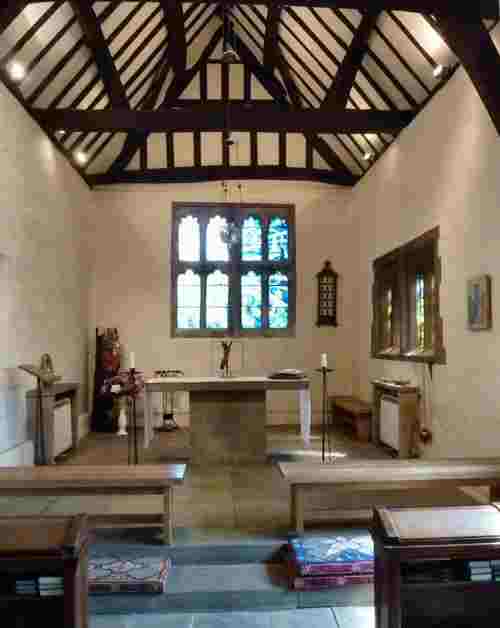ST MARY'S BRIDGE CHAPEL

ST MARY’S BRIDGE CHAPEL
On the banks of the River Derwent, in Derby, is situated one of only six bridge chapels left in the British Isles. It stands beside the 18th-century St Mary’s Bridge, which replaced a medieval bridge to which the chapel was originally attached. The precise date when the first bridge chapel came into existence is uncertain, but it is likely to have been around the late 13th to the early 14th century when it was built on the same site as the present chapel.
At the time when the chapel was built, travel was a dangerous occupation with robbery and murder not uncommon and the bridge chapel offered spiritual reassurance to travellers. The chapel also served as a collection point for tolls levied on traffic entering Derby. It was the resident hermit’s responsibility to collect the tolls on people and livestock crossing the bridge, the only crossing point of the River Derwent, into the town. The hagioscope, or squint, on the north wall would have been used by the hermit to monitor traffic, as well as by passers-by to see the light indicating the presence of the Blessed Sacrament.
After the Reformation, the bridge chapel was closed and nothing is recorded until the 25th July 1588, when Nicholas Garlick, Robert Ludlam and Richard Simpson were hung drawn and quartered and their remains draped over the chapel entrance. Garlick and Ludlam, two Roman Catholic priests, were arrested at Padley Manor and brought to Derby for trial on a charge of High Treason, together with Simpson another priest who was already in custody. After conviction, they spent their last night at the chapel which was then in use as a prison. The men are now remembered as the Padley Martyrs.
In the 1920s, the bridge chapel was in a derelict state, when it was bought by the Derbyshire Archaeological Society with the aid of a loan.
The chapel has been in continuous use as a place of worship since it was restored in 1930. Between 1930 and 1949 it, together with the adjoining house, was effectively owned by the Haslam family, who financed the restoration. In 1949 ownership was transferred to a board of trustees. The house was for many years, until 1985, occupied by clergy and then by families of successive head vergers of Derby Cathedral. Between 1985 and 1996 the house was leased by the trustees to the Padley Day Centre. In 1996 the house was leased to the Derbyshire Family History Society, which is the current tenant.
The bridge chapel is not particularly impressive from the outside, nor is it blessed with a quiet location, sandwiched between the Derby Ring Road and the still busy road across St Mary’s Bridge. Once inside all that changes, the noise vanishes and there is a feeling of peace and tranquillity. The white-painted walls, the simple furniture and the lack of fuss all add to the attraction of this wonderful place.
The roof timbers are particularly striking, one beam particularly because of its medieval carvings. The much-admired stained glass in the east window depicts various aspects of the Virgin Mary. In harmony with the rest of the chapel is the simply designed altar, the work of Ronald Pope. Both the chapel and adjoining house are managed by a Board of Trustees on behalf of Derby Cathedral. The chapel acts like a Lady Church for the cathedral, as well as being used for services by Lutheran, Latvian Lutheran and Russian Orthodox congregations
An exploration of the well-maintained gardens, to the side and rear of the property, will prove rewarding. The windows on the south side, although appearing to be medieval were in fact put in during the 1930 restoration, but the decorated windows on the east side are medieval. A walk under St Mary’s Bridge, when the river is low will reveal fragments of its predecessor on which the bridge rests.
